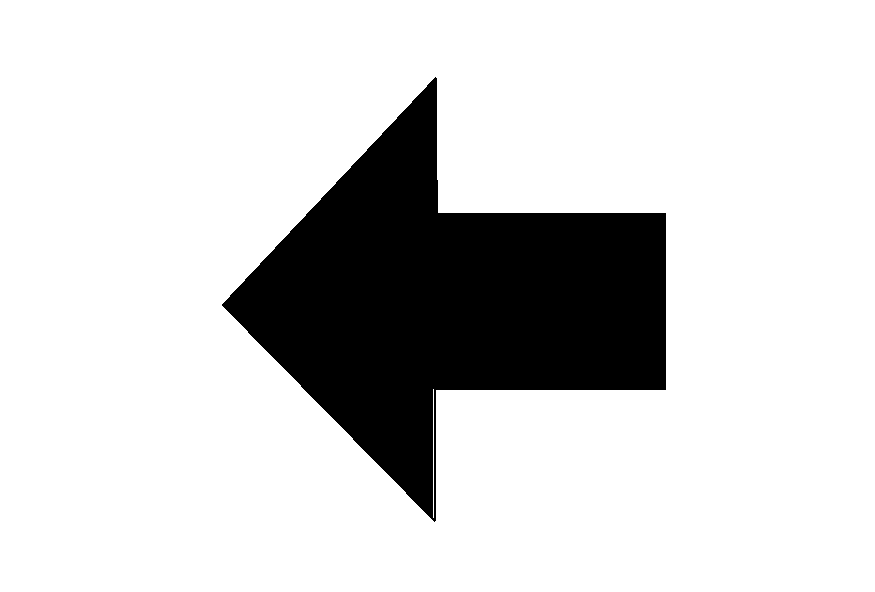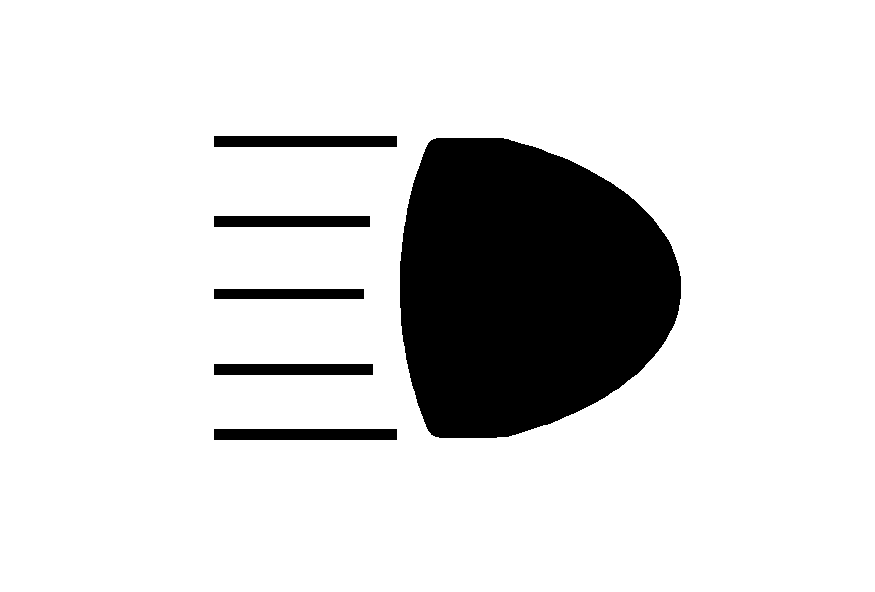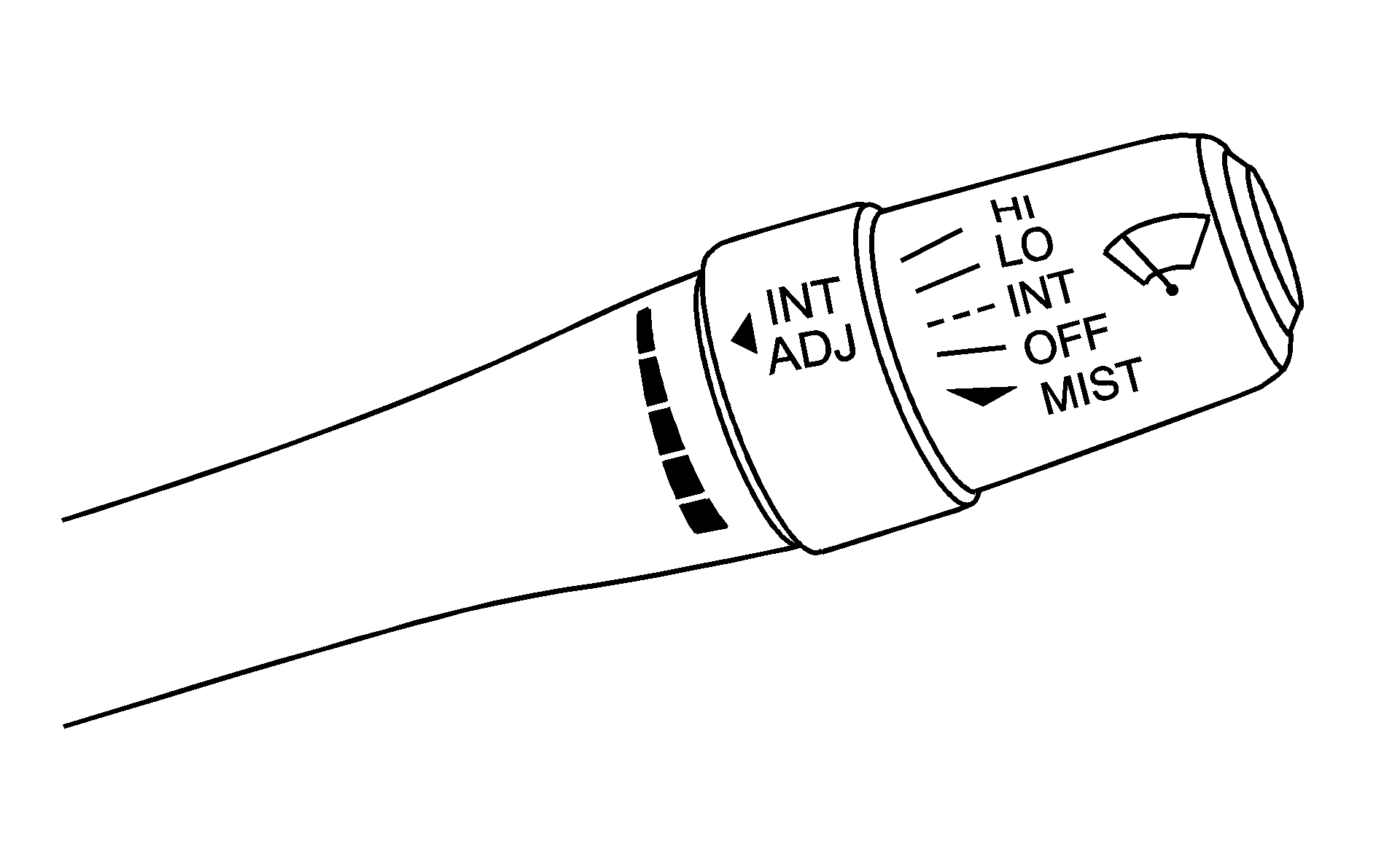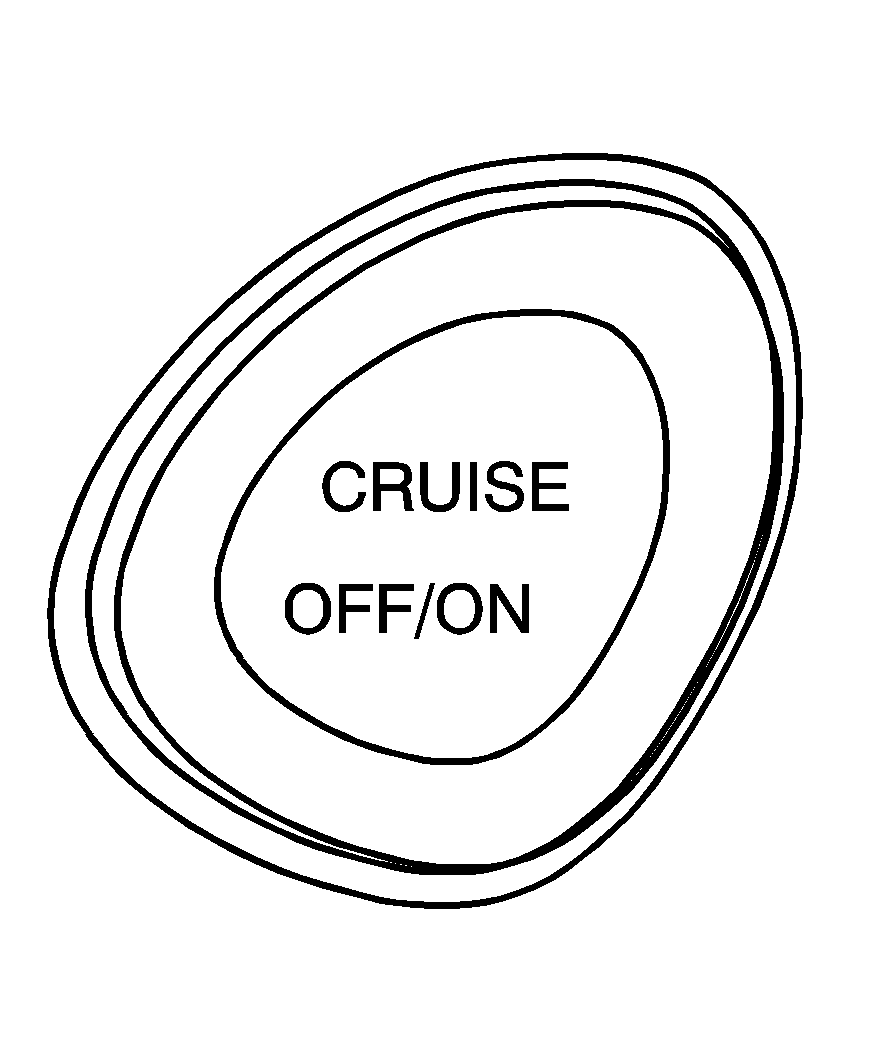
The lever on the left side of the steering column includes the following:
| • | Turn and Lane-Change Signals |
| • | Headlamp Switches including Headlamp High/Low-Beam Changer |
| • | Flash-to-Pass |
For information on the exterior lamps, see Exterior Lamps later in this section.
Turn and Lane-Change Signals
The turn signal has two upward (for right) and two downward (for left) positions. These positions allow you to signal a turn or a lane change.
To signal a turn, move the lever all the way up or down. When the turn is finished, the lever will return automatically.

An arrow on the instrument panel cluster will flash in the direction of the turn or lane change.
To signal a lane change, just raise or lower the lever until the arrow starts to flash. Hold it there until you complete your lane change. The lever will return by itself when you release it.
A warning chime signal will come on if you have left your turn signal on for more than 3/4 mile (1 km).
As you signal a turn or a lane change, if the arrows flash rapidly, a signal bulb may be burned out and other drivers won't see your turn signal.
If a bulb is burned out, replace it to help avoid an accident. If the arrows don't go on at all when you signal a turn, check for burned-out bulbs and then check the fuse. See Fuses and Circuit Breakers .
Headlamps

The lever on the left side of the steering column operates the exterior lamps.
The exterior lamp switch has three positions:
(Parking Lamps): Turn the switch to this position to turn on the parking lamps, together with the following:| • | Sidemarker Lamps |
| • | Taillamps |
| • | License Plate Lamps |
| • | Instrument Panel Lights |
AUTO: Turn the exterior lamps control to AUTO to provide for automatic operation of the headlamps, taillamps and parking lamps. For more information see "Automatic Headlamp System" later in this section.
Headlamp High/Low-Beam Changer
To change the headlamps from low beam to high beam, push the turn signal/multifunction lever away from you.

When the high beams are on, a light on the instrument panel cluster also will be on if the ignition is in ON.
To change the headlamps from high beam to low beam, pull the turn signal lever toward you.
Headlamps On Reminder
If you open the driver's door and turn off the ignition while leaving the lamps on, you will hear a warning chime.
Flash-to-Pass Feature
This feature lets you use your high-beam headlamps to signal a driver in front of you that you want to pass.
To use it, pull the turn signal/multifunction lever toward you until the high-beam headlamps come on, then release the lever to turn them off.
Windshield Wipers

Use this lever located on the right side of the steering wheel to operate the windshield wipers.
OFF: Move the lever to OFF to turn off the windshield wipers.INT (Intermittent): Move the lever to INT to choose a delayed wiping cycle. Turn the INT ADJ (Intermittent Adjust) band down for a longer delay or up for a shorter delay. The wiper speed can only be adjusted when the lever is in the INT position.
LO (Low Speed): Move the lever up to the first setting past INT, for steady wiping at low speed.
HI (High Speed): Move the lever up to the second setting past INT, for wiping at high speed.
MIST: Move the lever all the way down to MIST for a single wiping cycle. Hold it there until the windshield wipers start; then let go. The windshield wipers will stop after one wipe. If you want more wipes, hold the band on mist longer.
Remember that damaged wiper blades may prevent you from seeing well enough to drive safely. To avoid damage, be sure to clear ice and snow from the wiper blades before using them.
If they're frozen to the windshield, carefully loosen or thaw them. If your blades do become damaged, get new blades or blade inserts.
Heavy snow or ice can overload your wiper motor. A circuit breaker will stop the motor until it cools. Clear away snow or ice to prevent an overload.
Winshield Washer
To wash your windshield, push in the button at the end of the lever until the washers begin.
Caution: In freezing weather, do not use your washer until the windshield is warmed. Otherwise the washer fluid can form ice on the windshield, blocking your vision.
When you release the button, the washers will stop, but the wipers will continue to wipe for about three cycles and will either stop or will resume the speed you were using before.
Cruise Control
If your vehicle has cruise control, you can maintain a speed of about 25 mph (40 km/h) or more without keeping your foot on the accelerator. This can really help on long trips. Cruise control does not work at speeds below 25 mph (40 km/h).
Caution: Cruise control can be dangerous where you cannot drive safely at a steady speed. So, do not use the cruise control on winding roads or in heavy traffic.
Cruise control can be dangerous on slippery roads. On such roads, fast changes in tire traction can cause excessive wheel slip, and you could lose control. Do not use cruise control on slippery roads.Setting Cruise Control
Caution: If you leave your cruise control on when you are not using cruise, you might hit a button and go into cruise when you do not want to. You could be startled and even lose control. Keep the cruise control switch off until you want to use cruise control.
The cruise control buttons are located on the steering wheel for your convenience.


- Press OFF/ON to turn cruise control on. The indicator light on the button will come on.
- Get up to the speed you want.
- Press the SET DECEL (Decelerate) button and release it.
- Take your foot off the accelerator pedal.
Resuming a Set Speed
Suppose you set your cruise control at a desired speed and then you apply the brake. This, of course, shuts off the cruise control. But you don't need to reset it. Once you're going about 25 mph (40 km/h) or more, you can press the cruise control ACCEL (Accelerate) RESUME button briefly. You'll go right back up to your chosen speed and stay there.
If you press the ACCEL RESUME button briefly, the vehicle will keep going faster until you release the switch or apply the brake. So unless you want to go faster, don't hold down the ACCEL RESUME button.
Increasing Speed While Using Cruise Control
There are two ways to go to a higher speed.
| • | Use the accelerator pedal to get to the higher speed. Press the SET DECEL button, then release the button and the accelerator pedal. You'll now cruise at the higher speed. |
| • | Press the ACCEL RESUME button. Hold it there until you get up to the speed you want, and then release the button. To increase your speed in very small amounts, press the ACCEL RESUME button briefly and then release it. Each time you do this, your vehicle will go about 1 mph (1.6 km/h) faster. |
The accelerate feature will only work after you turn on the cruise control by pressing the SET DECEL button.
Reducing Speed While Using Cruise Control
There are two ways to reduce your speed while using cruise control:
| • | Press the SET DECEL button until you reach the lower speed you want, then release it. |
| • | To slow down in very small amounts, press the SET DECEL button briefly. Each time you do this, you'll go about 1 mph (1.6 km/h) slower. |
Passing Another Vehicle While Using Cruise Control
Use the accelerator pedal to increase your speed. When you take your foot off the pedal, your vehicle will slow down to the cruise control speed you set earlier.
Using Cruise Control on Hills
How well your cruise control will work on hills depends upon your speed, load and the steepness of the hills. When going up steep hills, you may have to step on the accelerator pedal to maintain your speed. When going downhill, you may have to brake or shift to a lower gear to keep your speed down. Of course, applying the brake takes you out of cruise control. Many drivers find this to be too much trouble and don't use cruise control on steep hills.
Ending Cruise Control
There are two ways to turn off the cruise control:
| • | Step lightly on the brake pedal; |
| • | Press OFF/ON. |
Erasing Speed Memory
When you turn off the cruise control or the ignition, your cruise control set speed memory is erased.
